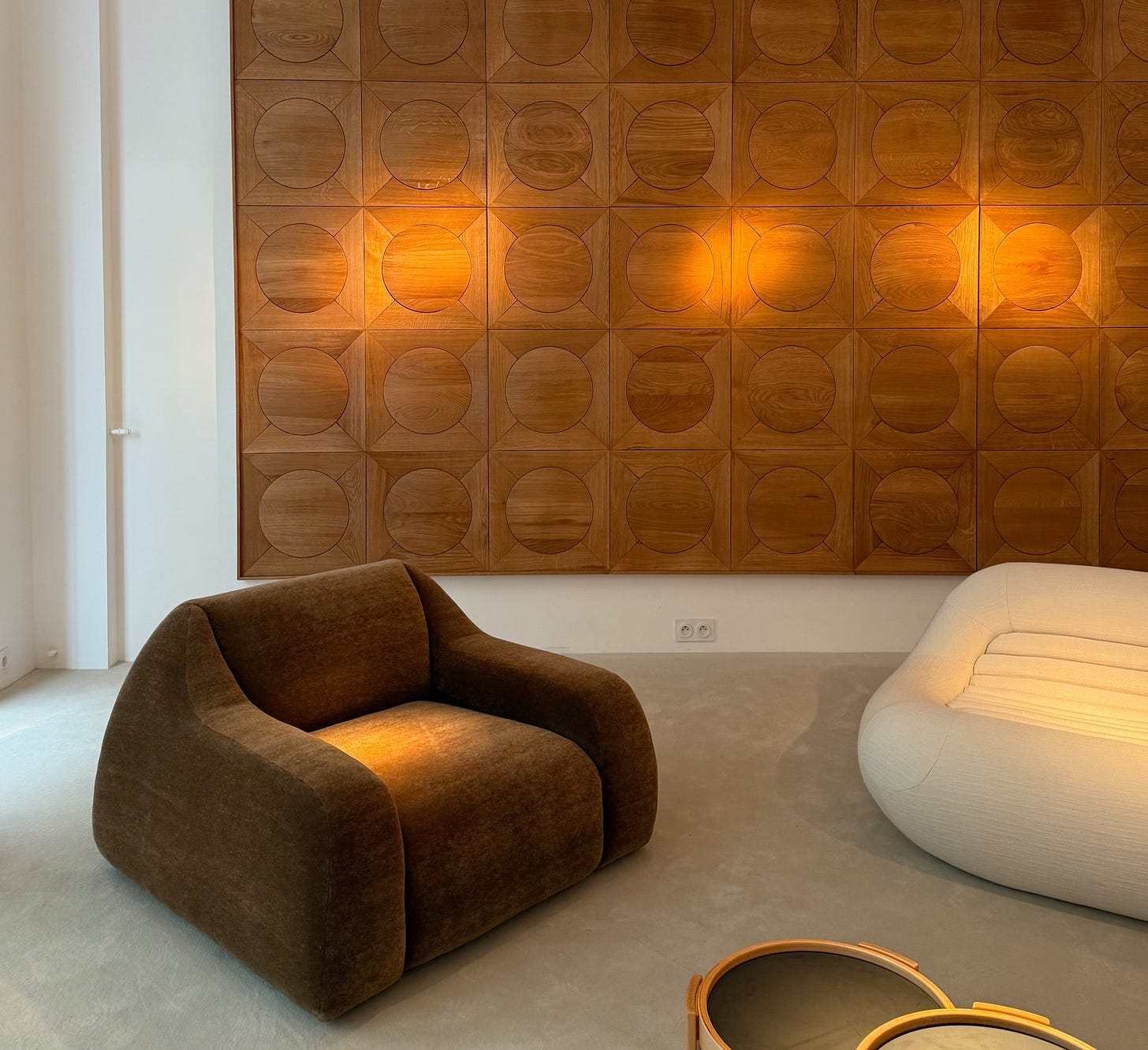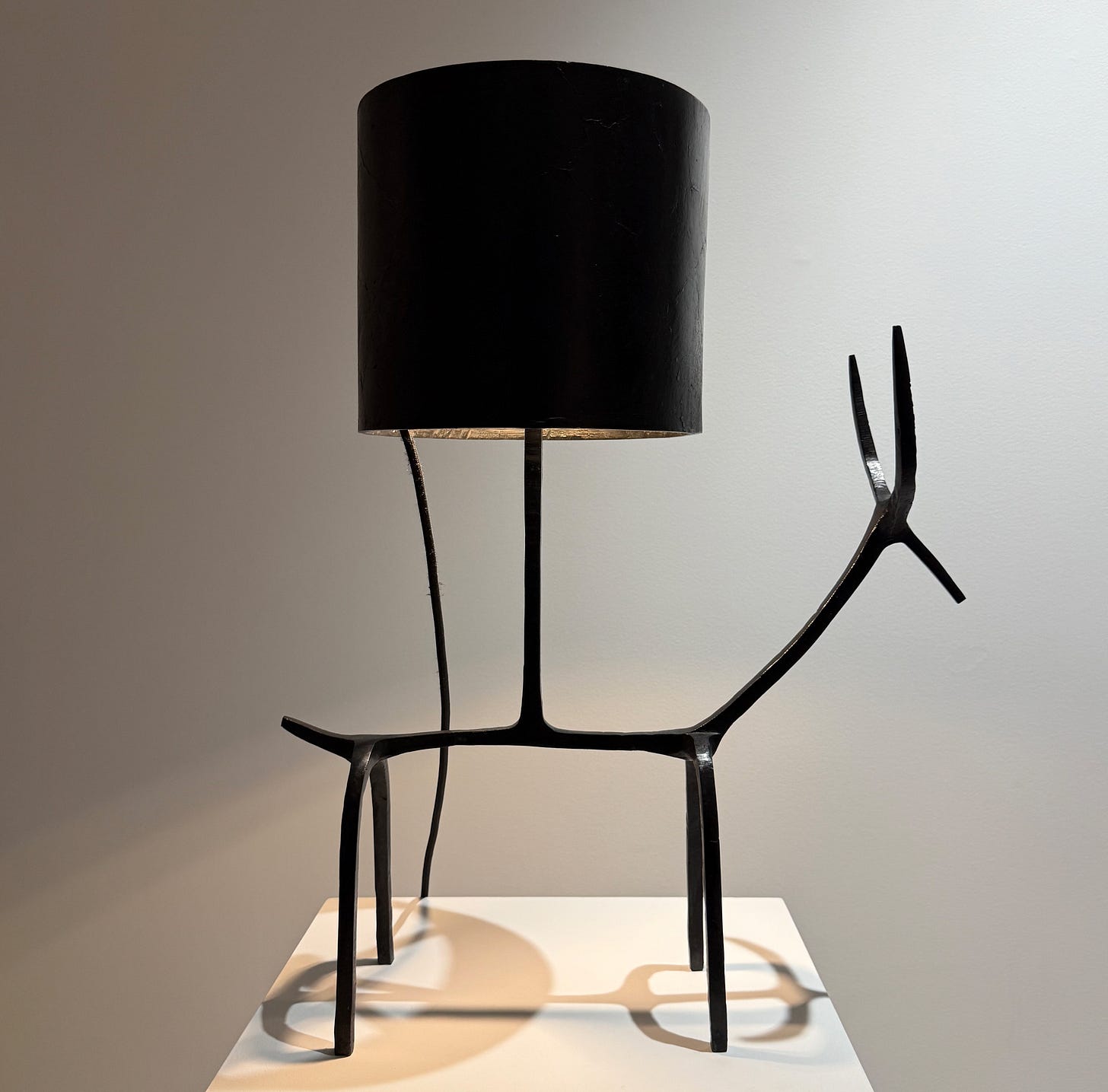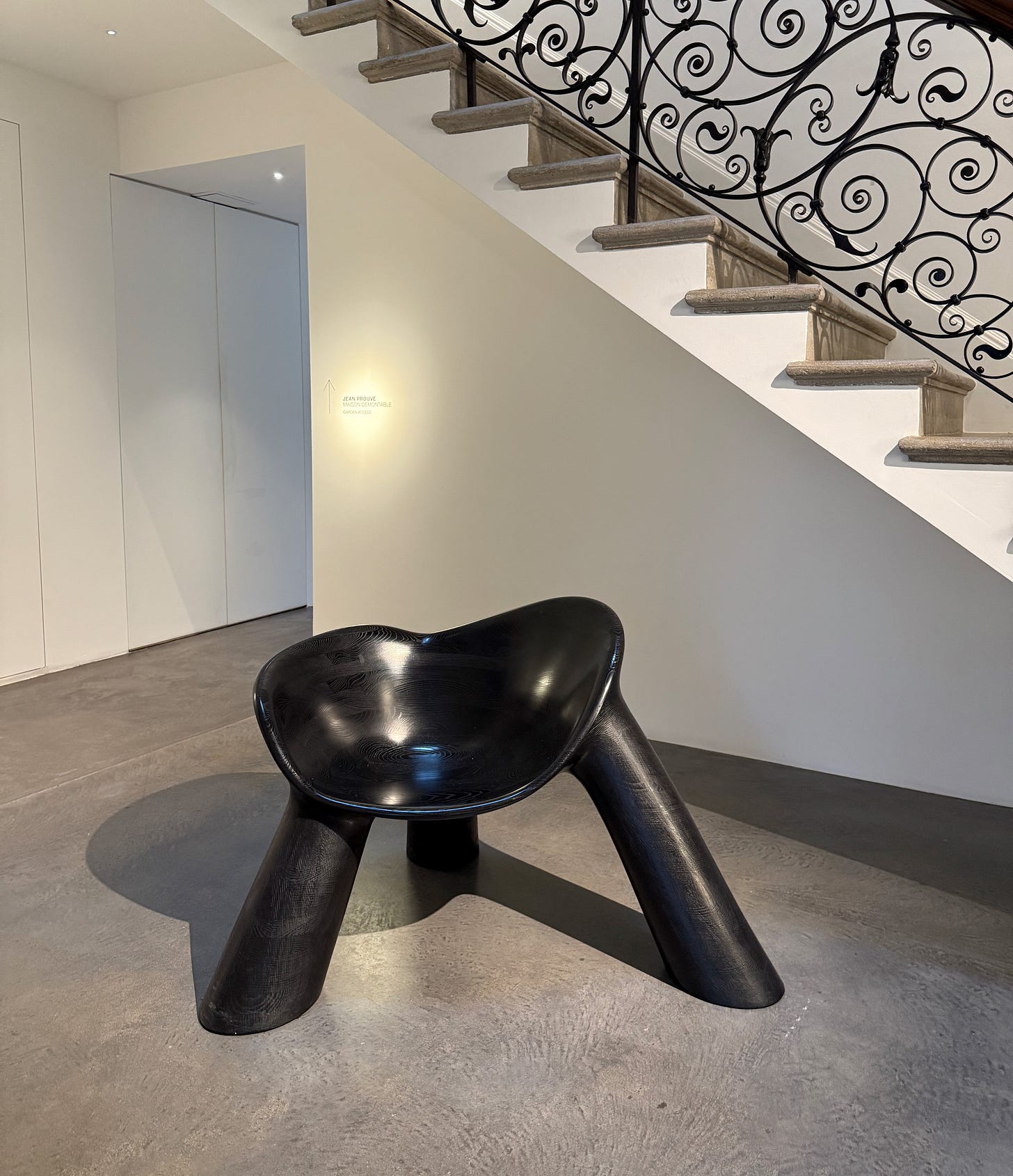Begin with What You See
Every object we live with tells a story. Some whisper, calmer in form and colour. Others insist, bold and bright, demanding attention. Collecting design is a deep passion of mine because when we pay attention to it, we learn to listen to our mind. We learn to be present with ourselves.
The moment you notice form, proportion or material, you’ve entered the conversation. Design collecting begins with awareness. This excites me to no end. If the only point you take away from this article is to look at an object and see a detail in a new way, how the maker shaped it, glazed it, carved or polished it, I’d consider that a success.
When your eye starts to notice these details, that’s the beginning of a beautiful conversation. One I want to have with you.
Look around. Find an object near you. Notice something about it you’ve never seen before.
That’s your entry point. This is your invitation into my world
What Is Design Collecting?
Design collecting is the act of choosing objects that carry thought, intention and presence. Some are functional, some sculptural. Some are historic, others entirely contemporary. But all are made with purpose, and you’ve chosen them with care.
Many begin with ceramics. Others with a lamp, a table, or a piece of glass. Some are already art collectors, looking to create a dialogue between the works on the walls and the objects in the room.
Go on, take a look around you. Find the nearest artwork. Now look at it in the context of the room you’re in. What is that saying to you? And remember, no answer is also an answer.
You might fall in love with a carved wood vessel, a 1970s mirror, or a quiet piece of textile art. The best collections begin with attention. Over time, they take on shape and weight.
To collect design is to shape how you live. To create rhythm, balance, surprise. To build meaning through the objects around you.
Why Does It Matter?
With the introduction of intention, a design collection becomes a form of expression. I’m not talking about being performative, I’m talking about showcasing your insight. How you think about that beautiful overlap between art, design and function matters to your collecting.
In one circle: craftsmanship — the evidence of skill, the hand, the material.
In another: conceptual intent — vision, authorship, an idea expressed through form.
And in the third: function — something you can live with, use, place in a space.
When these three overlap, you’re in the heart of collectible design.
But you don’t always need all three.
Some collectors focus on craft and concept, without the need for function, creating sculptural vessels, wall-based objects, and pieces that feel closer to design-art. Others start with functional pieces that might be lighter on concept but are beautifully made.
There’s no fixed formula. That’s what makes this interesting. But when you start using that mental diagram to evaluate what draws your eye, you begin to collect with more confidence. You start to recognise where an object belongs in the wider landscape. And more importantly, where it belongs in your life.
You begin to sense when a chair feels generous. When a curve feels right. When something ordinary becomes quietly extraordinary. You’re now always noticing the balance between use, story and skill, and where it sits in that internal diagram.
As your eye develops, the spaces you inhabit begin to shift. A room starts to feel less like a container and more like a composition. Your things are no longer just functional. They begin to tell your story.
Where to Start
Begin with what’s already around you: your home, your office, a restaurant, a hotel. Start to notice.
Then take it further:
Visit a gallery
Spend time with a single object at a fair or exhibition
Read an auction catalogue
Save images of what catches your eye
You don’t need to explain why something interests you. Just notice that it does.
Once something holds your attention, focus. Choose a category. Let yourself become absorbed in it, go deep, it could be ceramics, lighting, studio furniture, textiles, glass. You will start to see distinctions. You’ll begin to know what quality looks like.
How to Buy
Buy with care, knowledge and confidence.
Ask questions. Who made it? Where? Why that material? How was it constructed? What else has the artist made? How does this piece compare?
Make a list. But ask with respect. Art and design are not products. Meaning builds through relationships with the object, the gallery, and often with the person who made it. The value is in that dialogue.
Start with one meaningful acquisition. Whether you spend £250 or £2,500, let it be considered and felt. You can build an extraordinary collection slowly, with pieces that cost £50. The key is focus, consistency and love.
Find an artist whose work resonates. Research what they’ve made. Buy one piece. Then another. Five. Seven. Twelve. The group of objects, collectively, begins to hold more cultural and aesthetic weight than any one object on its own.
I did this with my collection of 1950s and 60s glass by Goran Warff. I built it quickly, within six months. I found pieces at auction in Texas, Sweden, the UK, France. Seven vases, from across the world, now live together on one shelf. They’ve travelled for decades and ended up here, quietly unified by me and celebrating the hand and mind of one glassmaker. That’s the magic for me.
A collection is a conversation across time, material and geography. And it begins with one piece.
What Changes When You Begin
You start to notice more.
You develop visual fluency.
You begin to seek beauty with a sharper eye and more importantly, you start to recognise when it appears.
Your spaces change. They become more intentional. Less filled. More focused. You begin to trust your instincts, not trends. You understand what you value.
And perhaps most importantly, you discover how meaningful it is to live with objects that carry stories. Things made by hand, chosen by you, with care.
Collector-to-Collector
Explore The Design Collector’s Toolkit — 25 AI prompts to help you see more clearly, ask better questions, and collect with confidence.
View the toolkit →
Serious About Collecting? So Are We
We advise private clients and interior designers ready to place art and design with intent. No guesswork. No speculation. Just considered acquisitions, cultural discernment, and total discretion.
Work with us →
See What I'm Seeing
Follow along on Instagram and Threads for real-time thoughts from galleries, fairs, and artists' studios.







